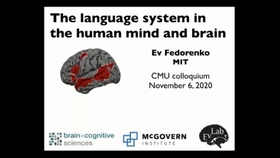Understanding the Importance of PET CT Contrast in Modern Medical Imaging
#### Introduction to PET CT ContrastPET CT contrast is a crucial component in the realm of medical imaging, combining the functional imaging of Positron Emi……
#### Introduction to PET CT Contrast
PET CT contrast is a crucial component in the realm of medical imaging, combining the functional imaging of Positron Emission Tomography (PET) with the anatomical precision of Computed Tomography (CT). This hybrid imaging technique allows for a comprehensive view of the body’s processes and structures, significantly enhancing diagnostic capabilities.
#### What is PET CT Contrast?
PET CT contrast refers to the substances used during PET and CT scans to improve the visibility of internal structures and functions. These contrasts are typically administered intravenously and help to highlight areas of interest within the body, making it easier for healthcare professionals to identify abnormalities such as tumors, infections, or other diseases.
#### How Does PET CT Contrast Work?

The use of PET CT contrast involves the injection of radiotracers, which are compounds that emit positrons. When these tracers are introduced into the body, they accumulate in areas of high metabolic activity, such as cancer cells. The PET scan detects the radiation emitted by these tracers, while the CT scan provides detailed images of the body’s anatomy. The combination of these two imaging modalities allows for a more accurate diagnosis.
#### Benefits of Using PET CT Contrast
1. **Enhanced Diagnostic Accuracy**: The primary benefit of using PET CT contrast is the improved accuracy in diagnosing various conditions. The functional information provided by PET, combined with the structural details from CT, allows for a more comprehensive evaluation.
2. **Early Detection of Diseases**: PET CT scans can detect abnormalities at an early stage, often before they become apparent in other imaging tests. This is particularly beneficial in oncology, where early intervention can significantly improve patient outcomes.

3. **Monitoring Treatment Response**: PET CT contrast is also valuable in monitoring how well a patient is responding to treatment. Changes in metabolic activity can indicate whether a tumor is shrinking or if the disease is progressing.
4. **Guiding Treatment Decisions**: The detailed images obtained from PET CT scans can help physicians make informed decisions regarding treatment plans. For instance, the scans can indicate whether surgery, radiation, or chemotherapy is the most appropriate course of action.
#### Potential Risks and Considerations
While PET CT contrast is generally safe, there are some considerations to keep in mind. Patients may experience allergic reactions to the contrast agents, though this is rare. Additionally, the radiation exposure from PET and CT scans, while within safe limits, should be considered, especially for patients requiring multiple scans.

#### Conclusion
In summary, PET CT contrast plays a vital role in modern medical imaging, offering enhanced diagnostic capabilities that can lead to better patient outcomes. By understanding the importance and functionality of PET CT contrast, patients and healthcare providers can work together to make informed decisions regarding diagnosis and treatment. As technology advances, the use of PET CT contrast will likely continue to evolve, further improving the accuracy and effectiveness of medical imaging.